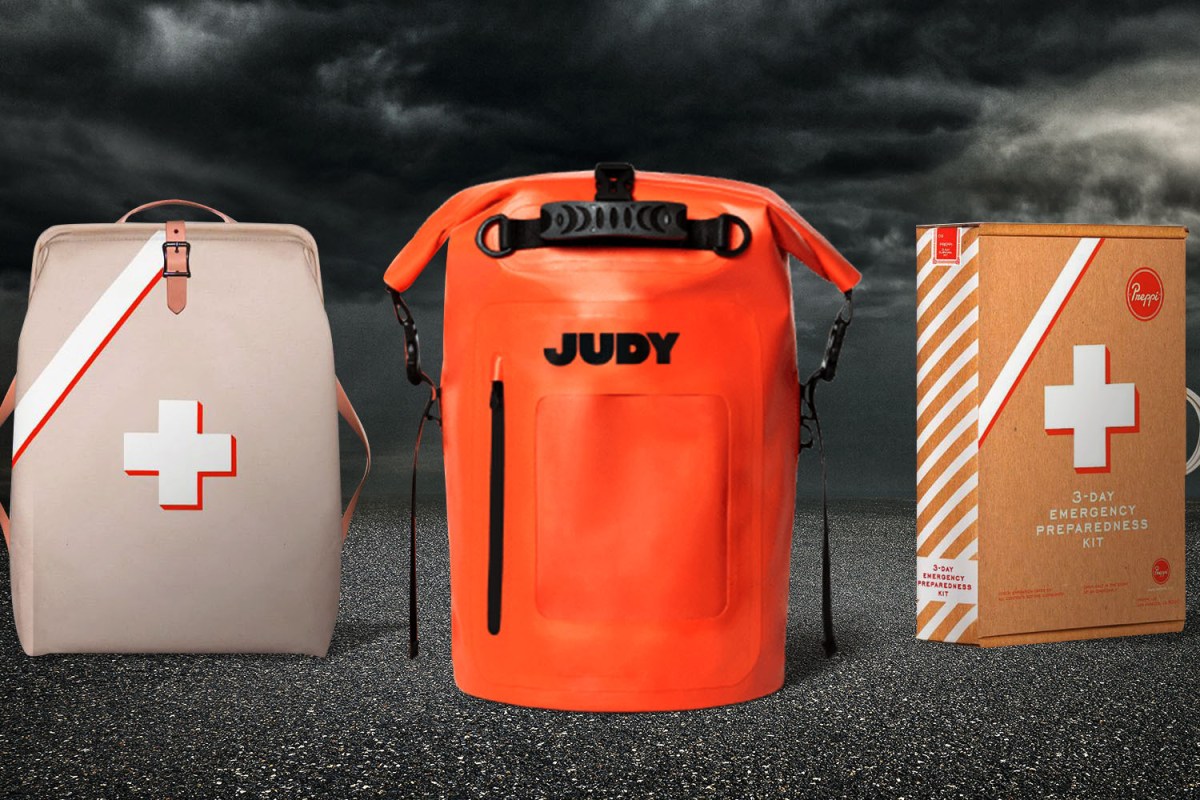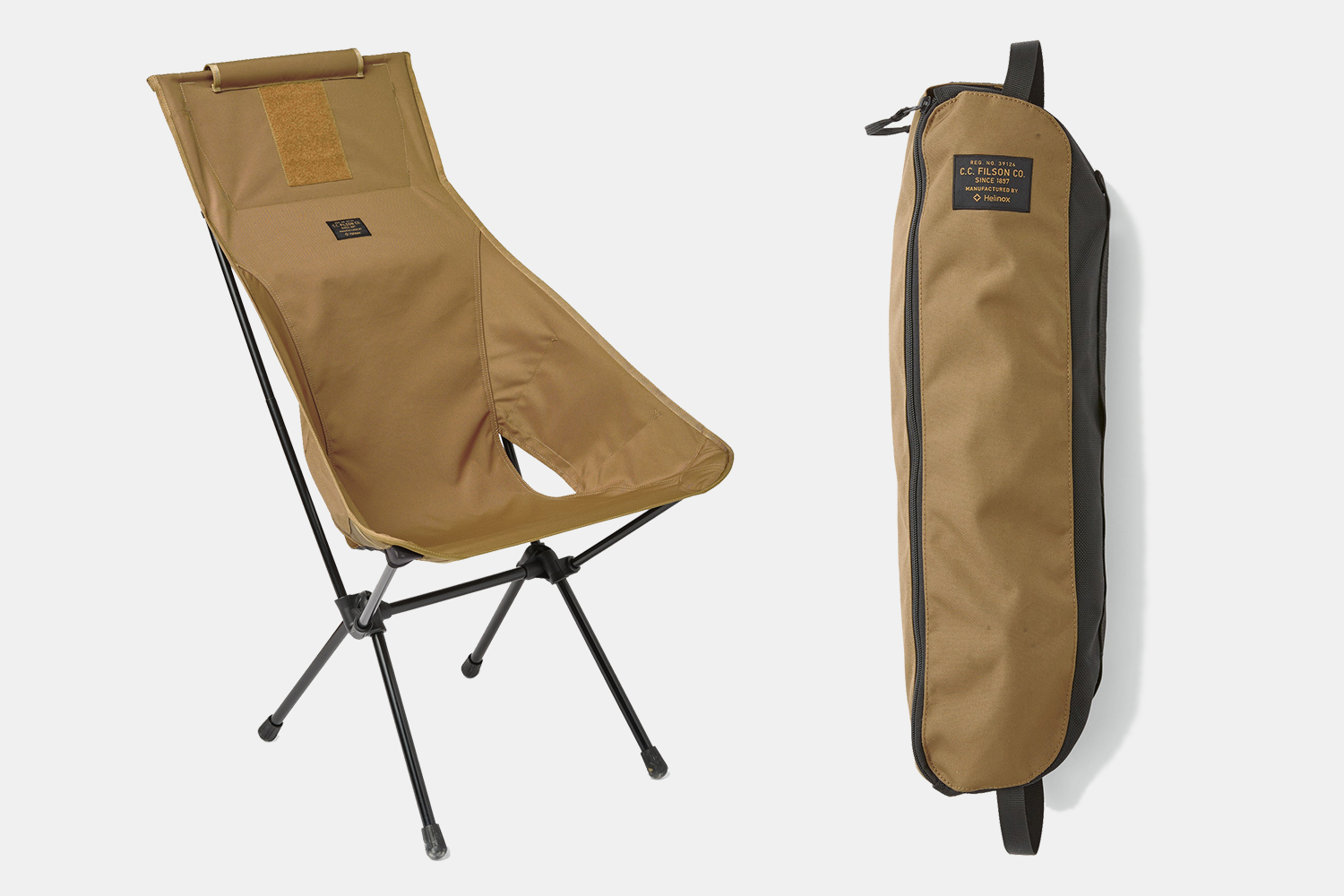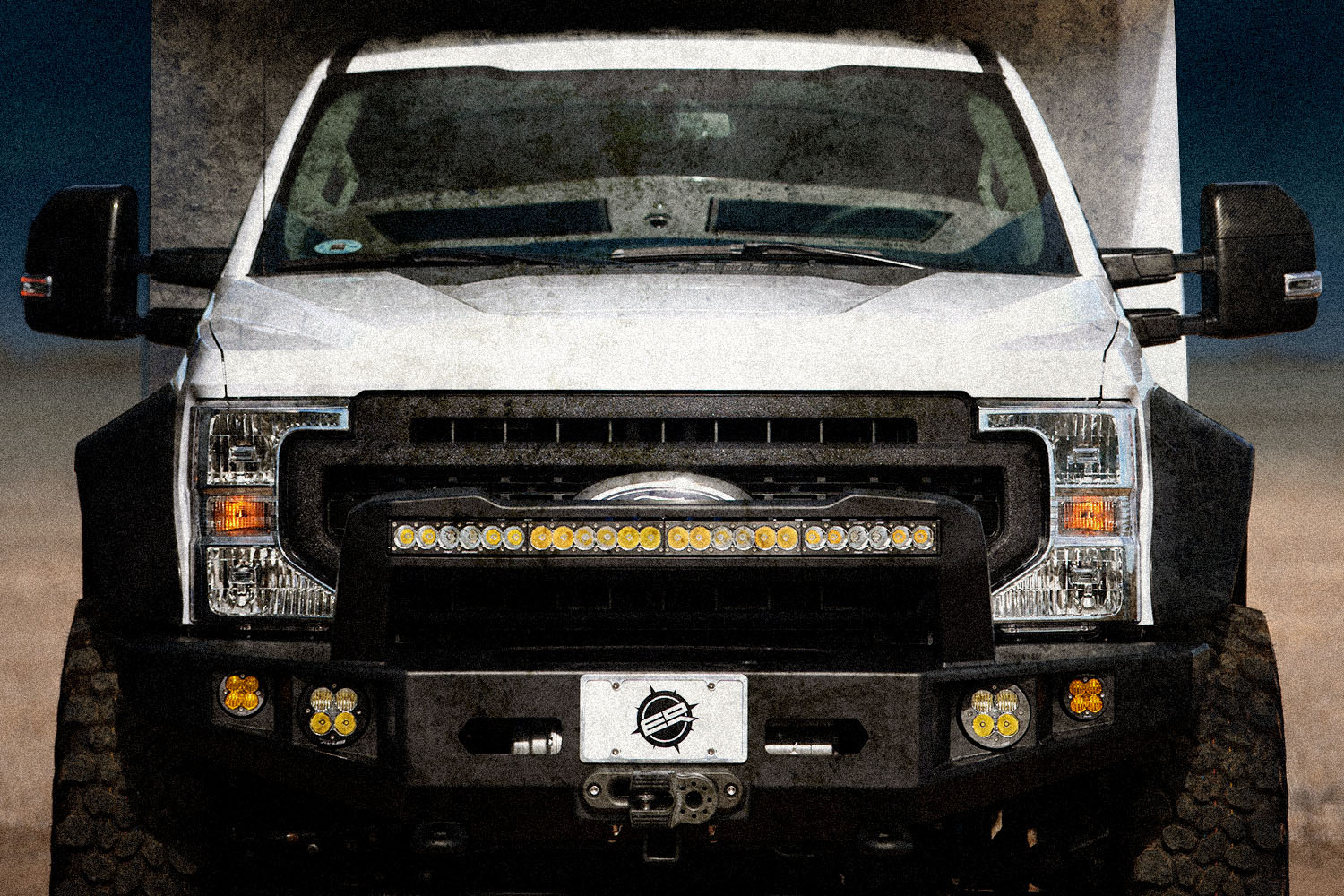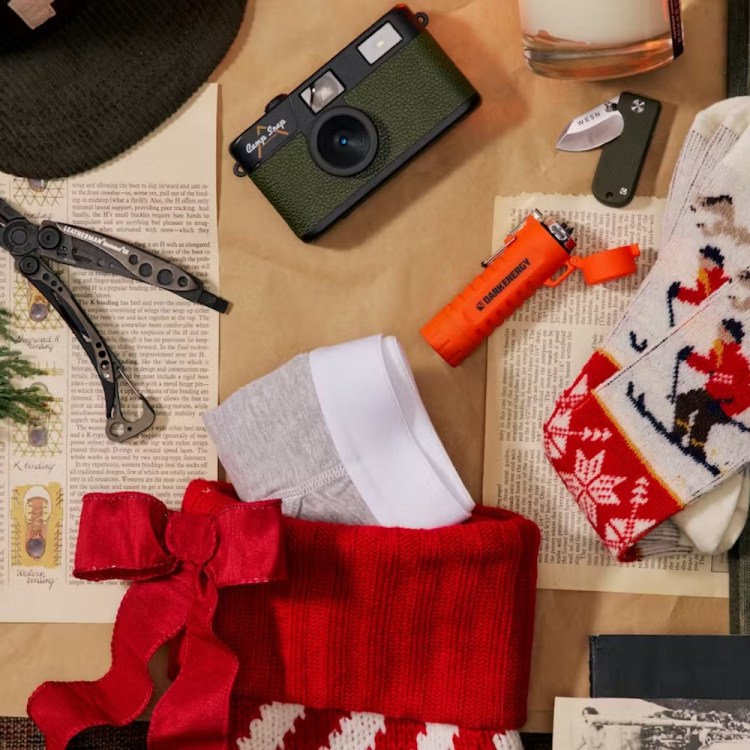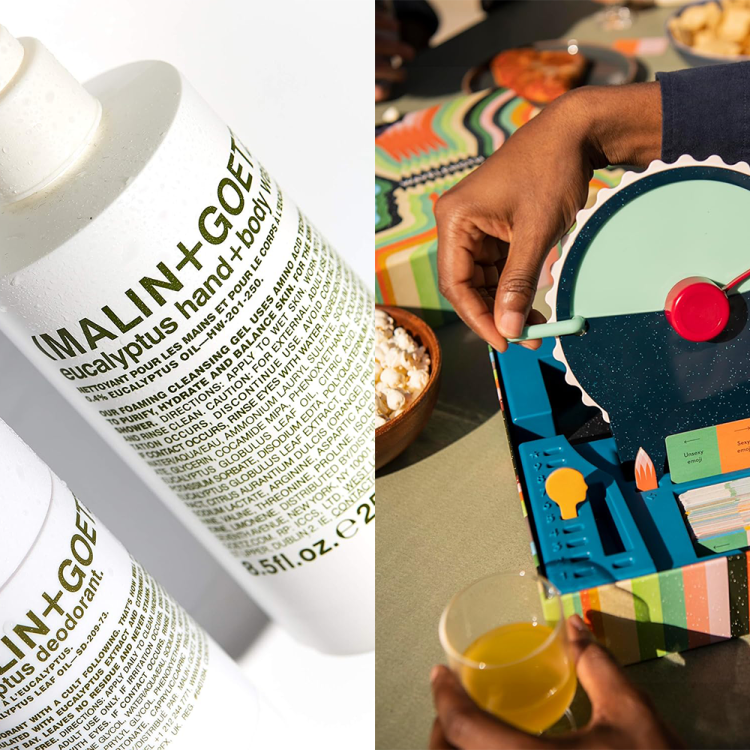It’s an attractive satchel. Cream-colored and expensive looking, the canvas bag’s body stamped in the center with a forest green cross, reminiscent of a first aid symbol on a doctor’s traveling kit. This tote is called the “Prepster Luxe,” and sells exclusively at Pottery Barn for $495 dollars. At first glance, the appearance of a high-priced purse on a high-end home furnishing store’s website is no pivot from Pottery Barn’s norm — it is one of the largest e-commerce retailers for upmarket housewares and has upscale products for any upscale room in any upscale home — yet the contents that come with this purse reveal a shift from the retailer’s norm: a roll of duct tape, survival matches, a space blanket, a signal flare, a poncho.
‘The Prepster Luxe 3 Day Emergency Bag helps you prepare for unexpected events with its thoughtfully planned and generously stocked kit of survival supplies,” reads Pottery Barn’s sales copy for the bag. “The Preppi 2 Person emergency survival kit is generously stocked with all of the necessary supplies to get through three days following an emergency event.”
True to its branding and its elite base of consumers, Pottery Barn’s luxe prepper bag also includes a Malin Goetz “essential” kit (grapefruit face cleanser, Vitamin E Face Moisturizer, Bergamot Body Cleanser, Vitamin B5 Body Moisturizer, peppermint shampoo and cilantro conditioner, which is essentially a nearly 40-dollar pack of travel-sized toiletries), a stainless steel flask, Kusmi Tea (a pricey brand that has been touted by the Kardashians) and a seven-dollar bar of Mast Brothers chocolate, among other items.
“When did the term ‘preppy’ go from a popped Izod collar guy named Ryan with frosted tips to the term for a person literally prepping for the end of days?” says Sabina Hitchen, a publicity strategist and long-time judge at the Annual Independent Handbag Designer Awards. “And who buys a white bug-out bag? Are we preparing for a disaster, or a fashion disaster, or both?”
At this point, all options are on the table. Despite Pottery Barn’s longevity with their typical economically privileged customer, the retail giant is not impervious to trends. The brand’s bug-out bag is part of a growing industry seeping into the home decor sector: survival gear. In 2017, the global market for “incident and emergency management” was valued at $75.5 billion, and Allied Research Marketing claims the market will soar to $423 billion by 2025.
Until recently, preppers have always been seen as a fringe culture, filed in the cultural library somewhere between the Michigan Militia and Duck Dynasty. The image we’re most accustomed to is a macho kind of prepping — clever rednecks who gather guns and ammo and head to the woods to wait out the zombie apocalypse. But the dumpster fire known as the year 2020 has brought us face to face with disasters of biblical proportions — pandemics, flooding, fires, hurricanes, droughts — being a daily scenario, with scientists this year pushing the doomsday clock two minutes closer to midnight.
Young Americans have been raised on tragedy and capitalism, but they’re also coming to terms with the reality that when a natural disaster or a global pandemic strikes, the government isn’t always going to do the right thing; you might have to put together your own emergency bag, or create a company that sells them.
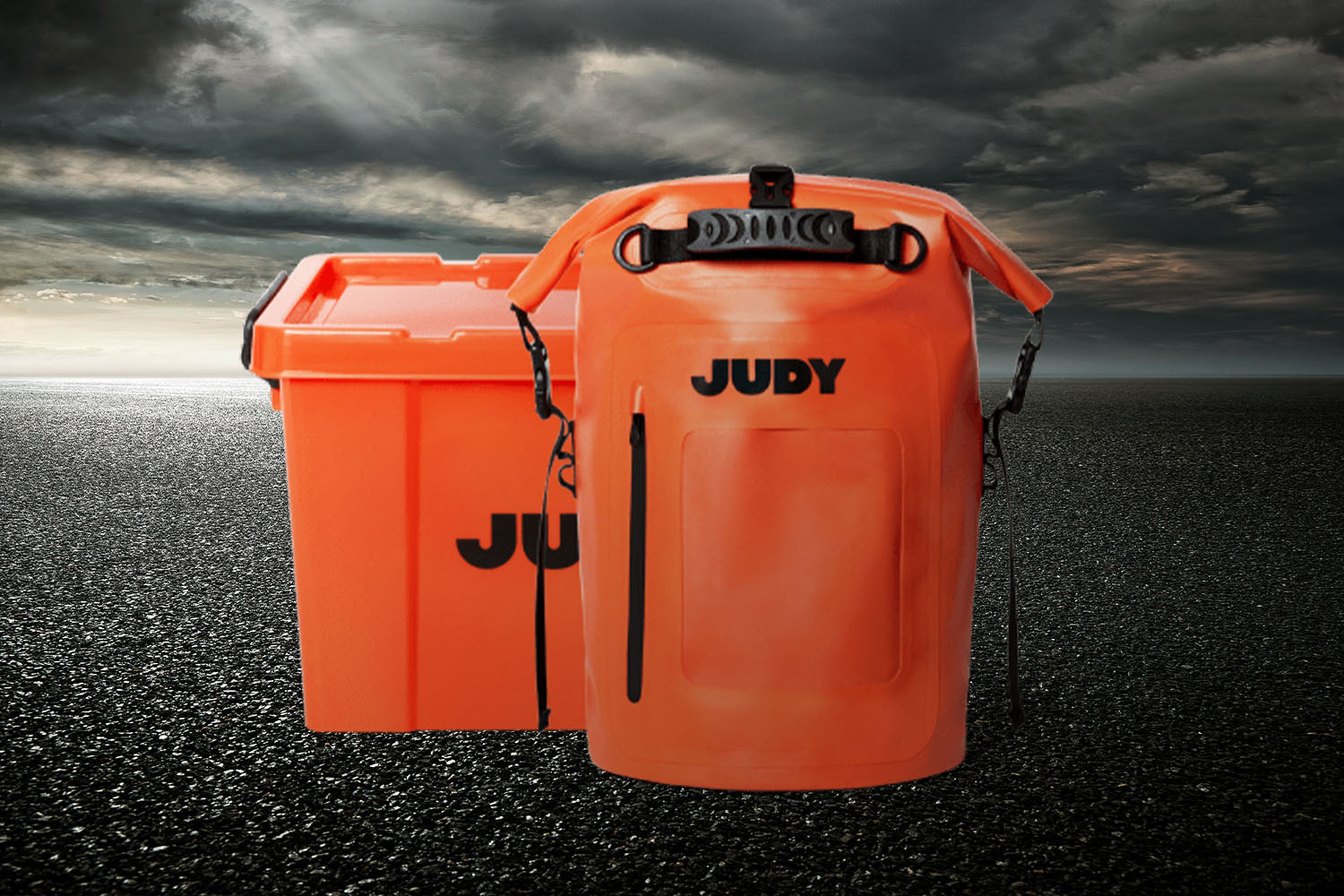
Simon Huck did the latter. Two years ago, the successful public relations owner of Command Entertainment Group (known for his close relationship with the Kardashian family) oscillated from the vast subculture of celebrity and reality shows into the growing market of disaster preparedness. “I had so many friends and family who have been in these emergency situations,” says Huck, the founder and CEO of the emergency preparedness company JUDY, over the phone from his apartment in Manhattan, where he’d been living since the start of the pandemic. “They’d experienced everything from household fires and floods to large scale emergencies, hurricanes, lost their homes. And the common denominator was their fundamental lack of preparedness. No one had a go-bag, a first aid kit. People had a haphazard approach to being prepared. Have you spoken to your husband or wife or kids or partner about an evacuation plan? No one had done that. None of the ground rules of basic emergency preparedness had been met.”
With this, Huck saw an opportunity and pivoted to create JUDY — its name not an acronym but rather “just a word that sticks.” JUDY’s emergency go-kits are Millennially-stylish, construction-orange bug-out bags with catchy black block lettering. There are five types of bags, costing anywhere from 45 to 250 dollars, ranging in size from a fanny pack to plastic crate. Contents include anything from basic first aid to a 72-hour self-sufficiency kit of a flashlight, duct tape, phone charger, food bars, and a hand-crank radio. Huck employed FEMA associates to help him create a more realistic kit, sans cilantro hair conditioner and bourgeois chocolate bar.
“Why are so many American families so vastly underprepared for emergencies?” says Huck. “It seemed so crazy that so many people are more and more affected by natural disasters, but are less and less prepared.”
For those who cannot afford a kit — Huck is aware of the cost of his bags — the company donates another kit to a family in need for each bag sold. JUDY also offers free emergency planning PDFs, which offer basic advice for before, during, and after your prescribed emergencies strike as well as text alerts to receive regular preparedness reminders, similar to the recent creation of Google’s Crisis Alert system.
“Preparedness is absolutely key, and everyone should have access to the tools and skills of being prepared,” says Ruha Devanesan, Crisis Response Partnerships Lead for Google Search. “This is something we focus on with Google’s Crisis Alerts — getting preparedness and safety tips out to everyone affected by a natural disaster, to help level the playing field on who has access to this information.” Devanesan agrees that many of these pricey prepper sites are an example of how prepping is a luxury in the sense that only those of us with resources have access to it. If you’re living paycheck to paycheck, it’s not practical for you to put away extra food, clothes, etc. for a rainy day. People who can afford a Pottery Barn go-kit are probably going to be more prepared for a disaster than folks who are putting their paychecks to more immediate practical needs
“One the one hand,” says handbag expert Hitchen, “yes, we are in epochal times, and yes, it is a capitalist society, where we are all free to create and sell. But when has it been necessary that we have grapefruit lip balm? Will it save my life?”
Hitchen raises an important question: are these bags sufficient enough for survival? And what happens next — when you run out of food, water and other basic supplies? Where are you going to run to? What makes a person self-sufficient? According to experts, you cannot always purchase preparedness.
Enter Chauncia Willis. Willis is co-founder of The Institute for Diversity and Inclusion in Emergency Management (I-DIEM), a global non-profit created to positively impact people’s lives by integrating social equity values into all aspects of the emergency management enterprise. I-DIEM pairs social equity, or parity in treatment and distribution of resources, with scientific data to evaluate and plan for global resilience opportunities and challenges. “Our focus is on humanity and our vision supports the empowerment of marginalized communities within all phases of the emergency management cycle,” says Willis, who has been in emergency management for over 21 years. “We understand the need for increased focus on vulnerable groups who are under-resourced. One of the reasons we created this organization is because there is a lack of equity within the field of disaster management,” says Willis from her home in Atlanta, Georgia. “We also understand that emergency preparedness cannot be purchased.”
Willis says that if people stick with the capitalist mindset that preparedness can be purchased, we’ll see many more people — particularly those who are more vulnerable and those who have been marginalized — impacted negatively. “We’ve seen that with Covid-19. The groups that were most vulnerable were labeled ‘essential workers’ and forced back to work, and those who were privileged could stay at home with their internet and were not exposed to the virus. This is the expendable population in disasters.” Willis, a Certified Emergency Manager, Master Exercise Practitioner and Certified Professional Coach, has coordinated consequence management and homeland security activities for large-scale national and international events to include the Tampa Bay Super Bowl XLIII, the Republican National Convention, the International Indian Film Festival (Bollywood Oscars), the NCAA National Football Championships and the Women’s Final Four Championships.
“Certain groups are expendable,” Willis continues, “and it’s been happening since the time of the Yellow Fever, where slaves and Irish migrant workers were considered ‘expendable’ and disposable, and so it continues. It’s based on this willful disregard for people of color, poor people, and those who lack privilege.” Willis believes preparedness is a mindset, not a commodity, and a proactive one: Whatever occurs, we will consider it ahead of time, then we’ll make preparations to address it. Willis and I-DIEM focuses on community cohesion: encouraging communities to adopt the old way of thinking, meaning that we share what we have.”
Understanding of preparedness starts with how we communicate about disasters. According to disaster preparedness expert Bonnie Haskell of The Red Cross Global Disaster Preparedness Center, although the term “natural disaster” is commonly used, it’s actually inaccurate. “There are natural hazards,” Haskell says, “however it is the result of human decisions (planning, development, etc.) that determines whether they become a disaster.” With that in mind, preparedness activities can differ due to type of hazard and context. “For the wildfires, hurricanes and floods across the US right now, people can prepare by having a family disaster readiness plan and an emergency go-bag. (In COVID-19 times, this should include having a cloth face covering.) Preparedness,” says Haskell, “also importantly extends to community-level action and collective planning. As communities are the first to respond, with neighbors helping neighbors and additional help coming in afterwards if needed, local action should be the base for preparedness as well. This is where the Red Cross can come in — by facilitating community level activities, early warning and early action and raising awareness of risks.”
At the end of the day, or the world, it takes more than material items to survive, let alone haute items. “Most people,” says Chauncia Willis, “especially in this Covid economy, cannot afford this luxurious preparedness kit. In addition, most of the items can be purchased for far less. Preparedness on a budget is a real thing. However, the bigger issue is what it says about preparedness as a whole. When I see it, I think of the inequities it promotes and I wonder who the privileged few are that would purchase this. Disaster preparedness cannot be purchased and stored away. Quite honestly, I’ve never seen a disaster kit that’s actually saved anyone’s life. Preparedness is a mindset and requires a communal approach to survival.”
This article appeared in an InsideHook newsletter. Sign up for free to get more on travel, wellness, style, drinking, and culture.
